23 November 2017
Our Blue Planet
Increasing awareness of plastic pollution.
By Lynda Goetz
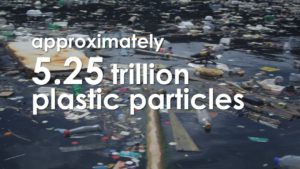
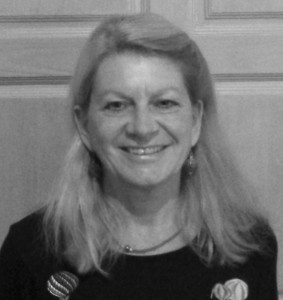 Last year a friend of my daughter did a 260-mile trip around the Cornish coast on a SUP (stand-up paddleboard) to raise funds* for Surfers Against Sewage, a charity working to raise awareness, inter alia, of pollution to our oceans, including plastic pollution. The organisation was founded in 1990 in Porthtowan Village Hall and is still based in nearby St. Agnes. Twenty seven years later (!) more people are finally waking up to this problem.
Last year a friend of my daughter did a 260-mile trip around the Cornish coast on a SUP (stand-up paddleboard) to raise funds* for Surfers Against Sewage, a charity working to raise awareness, inter alia, of pollution to our oceans, including plastic pollution. The organisation was founded in 1990 in Porthtowan Village Hall and is still based in nearby St. Agnes. Twenty seven years later (!) more people are finally waking up to this problem.
In Tuesday’s Daily Telegraph, it was reported that last Sunday’s episode of Blue Planet II had raised viewers’ awareness of this issue. The sight of a mother pilot whale carrying her dead baby around in her mouth days after it had died, apparently had viewers ‘in tears’ after David Attenborough had ‘explained’ that the whale felt grief. Honestly? Do we really need that fact ‘explained’ to us? Why on earth is it that humans are so arrogant that they need it explained to them that other creatures are also capable of some form of emotion? That aside, it was noted that plastic pollution was only one theory for the cause of death of the baby whale and some scientists apparently considered the link ‘questionable’.
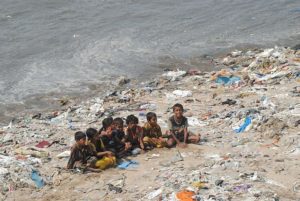 In many ways, this is immaterial. The fact that the programme was, in this way, able to draw attention to what is a massive and growing problem can hardly be a bad thing. Perhaps, as Malcolm Hudson, associate professor of environmental sciences at Southampton University, pointed out, they could have made the case ‘with evidence, not hype’. Maybe, but the ‘fluffy bunny’ approach is clearly effective and so often hits the point home far more effectively than statistics. The statistics, it has to be said, are devastating.
In many ways, this is immaterial. The fact that the programme was, in this way, able to draw attention to what is a massive and growing problem can hardly be a bad thing. Perhaps, as Malcolm Hudson, associate professor of environmental sciences at Southampton University, pointed out, they could have made the case ‘with evidence, not hype’. Maybe, but the ‘fluffy bunny’ approach is clearly effective and so often hits the point home far more effectively than statistics. The statistics, it has to be said, are devastating.
According to Greenpeace, which for the last nine months has been running a campaign against Coca Cola, up to 12 million tonnes of plastic (or 8 million according to The World Economic Forum) is entering the oceans every year, with Coca Cola alone producing 100 billion throwaway (single use) bottles. According to the Telegraph article, 300 million tonnes of plastic is produced globally each year. It is not clear where that figure comes from, but it is probably an under-estimate. As long ago as 2011, according to an article in The New York Times by Bettina Wassener (Raising Awareness of Plastic Pollution) the amount was 300 million tons. Plos one, a scientific journal, estimates that there are 5 trillion pieces of microplastic in the ocean.
The Ellen MacArthur Foundation, whose mission is to ‘accelerate the transition to a circular economy’, believes that unless things change, there will be more plastic than fish in the ocean by 2050. According to an article in The National Geographic in July this year, there has been yet another discovery of a massive amount of plastic floating in the South Pacific. This was discovered by Captain Charles Moore, who also discovered the famed North Pacific garbage patch or ‘gyre’ in 1997.
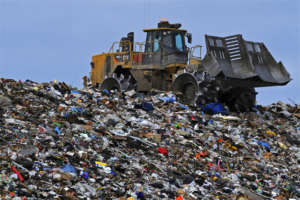 The problem is that not only are these figures meaningless for most of us, but also that these so- called ‘Great Pacific Garbage Patches’ do not consist of visible rubbish, but mainly of plankton-sized bits of micro plastic. They cannot be photographed to produce a shocking testimony to the way humanity is trashing the planet. Blue Planet II could not send one of its boats into the middle of this phenomenon as evidence of what is happening. However, scientists have known for some time that these clouds of micro garbage have the ability to soak up toxins and make their way into the food chain. How best to pass this information on to the public? David Attenborough’s voice-over on Sunday night suggested that the pilot whale calf may have been poisoned by its mother’s contaminated milk, contaminated that is by the broken-down plastic combining with other pollutants to poison marine life. This, of course, may be only one possible cause of the death of the young animal, but it is an explanation that hits home. Viewers could see a tangible and distressing outcome to human behaviour. Social media took over.
The problem is that not only are these figures meaningless for most of us, but also that these so- called ‘Great Pacific Garbage Patches’ do not consist of visible rubbish, but mainly of plankton-sized bits of micro plastic. They cannot be photographed to produce a shocking testimony to the way humanity is trashing the planet. Blue Planet II could not send one of its boats into the middle of this phenomenon as evidence of what is happening. However, scientists have known for some time that these clouds of micro garbage have the ability to soak up toxins and make their way into the food chain. How best to pass this information on to the public? David Attenborough’s voice-over on Sunday night suggested that the pilot whale calf may have been poisoned by its mother’s contaminated milk, contaminated that is by the broken-down plastic combining with other pollutants to poison marine life. This, of course, may be only one possible cause of the death of the young animal, but it is an explanation that hits home. Viewers could see a tangible and distressing outcome to human behaviour. Social media took over.
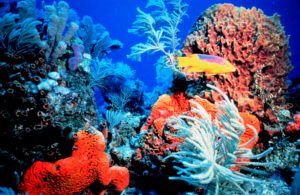 If this explanation was only one of several possible causes of death, who cares? The important thing at this point several decades down the line is that we should alter our behaviour. If TV hype rather than strict evidence produces a result, then that cannot surely be a bad thing? A long time ago, recycling as an industry was not necessary. We did not produce or consume as much as we do now and ‘things’ were re-used, repaired or handed down. Now that there are so many of us and we consume on such a massive scale it is essential that we tackle the issue of waste both constructively and imaginatively. Academics, some industries and governments have been looking at this for some time, but the more aware the general public are the better. If distraught pilot whales can be conscripted for this purpose and in the words of one tweeter quoted ‘make you want to live more consciously with your plastic consumption’, then this is almost certainly a small but significant step towards changing our attitudes and our habits. If, as an added bonus, celebrities and those in high profile positions are also moved or even ‘haunted’ (Michael Gove on Twitter) by such images then we will perhaps not get to the position where plastic outweighs fish in our oceans.
If this explanation was only one of several possible causes of death, who cares? The important thing at this point several decades down the line is that we should alter our behaviour. If TV hype rather than strict evidence produces a result, then that cannot surely be a bad thing? A long time ago, recycling as an industry was not necessary. We did not produce or consume as much as we do now and ‘things’ were re-used, repaired or handed down. Now that there are so many of us and we consume on such a massive scale it is essential that we tackle the issue of waste both constructively and imaginatively. Academics, some industries and governments have been looking at this for some time, but the more aware the general public are the better. If distraught pilot whales can be conscripted for this purpose and in the words of one tweeter quoted ‘make you want to live more consciously with your plastic consumption’, then this is almost certainly a small but significant step towards changing our attitudes and our habits. If, as an added bonus, celebrities and those in high profile positions are also moved or even ‘haunted’ (Michael Gove on Twitter) by such images then we will perhaps not get to the position where plastic outweighs fish in our oceans.
Type ‘Plastic Pollution’ into your search engine and see what comes up. You will find petitions to sign, campaigns to join, not to mention the chance to donate a few pounds towards a really worthy cause. Without life in our oceans (which as many know constitute over 70% of our planet), life as we know it will not continue. This is a campaign we all have a stake in.
If you enjoyed this post please share it using the buttons above.
Please click here if you would like a weekly email on publication of the ShawSheet

